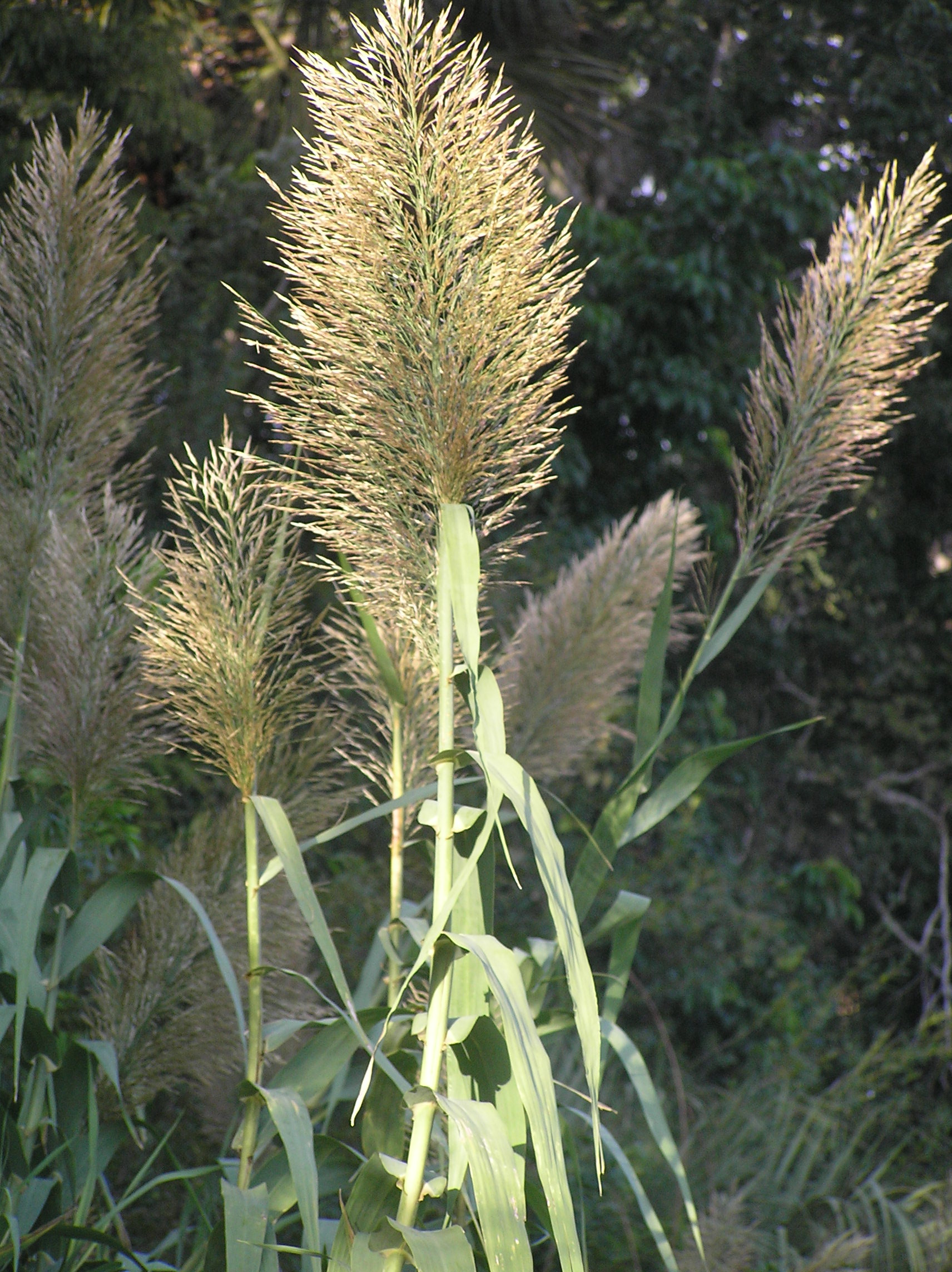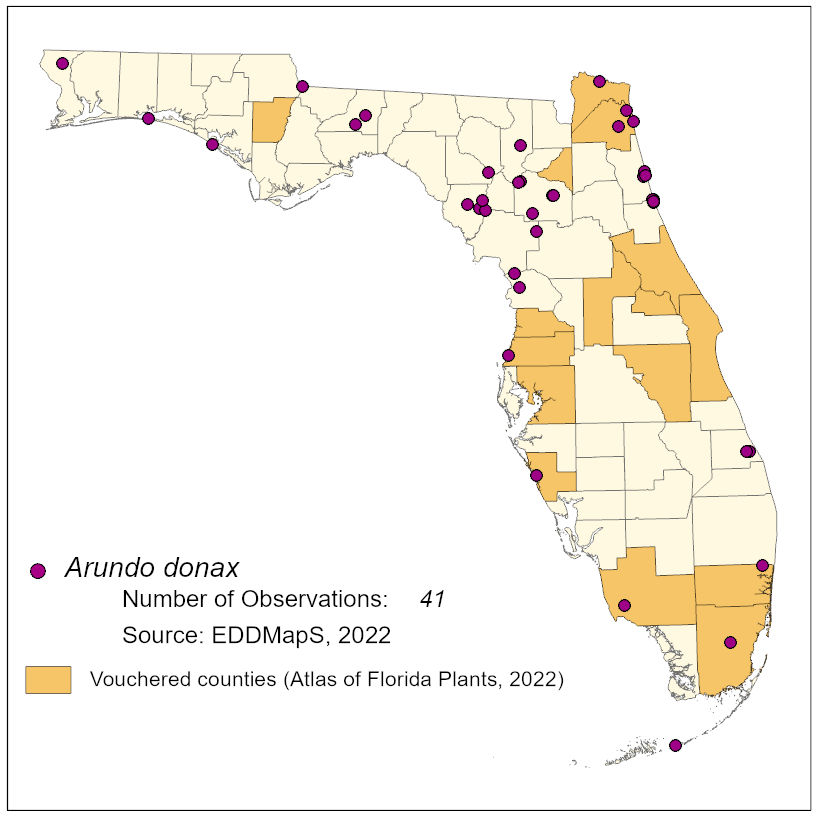Common Name: giant reed
Family: Poaceae
Common Synonyms: none
USDA Hardiness Zone: 6a-10b
Growth Habit: Bamboo-like grass
Origin: Old World
FISC Category: -
FDACS Listed Noxious Weed: No
Introduction Date: Earliest Florida specimen vouchered in 1965
IFAS Assessment:

Corn-like stems forming thickets of distinct clumps. Plants up to 6 m tall. Stems round in cross-section, glabrous and gray-green, jointed every 2.5-3.0 cm. Leaves alternate, long-lancoelate, jutting from the stems and then drooping near the ends of the blades. Dense terminal plume of infertile but densely hairy seeds. Plants spread from rhizomes.
Wet to dry disturbed areas
This species has been proposed as a biofuel in the state of Florida. Similar to golden bamboo (Phyllostachys aurea) and the native common reed (Phragmites australis), which occurs in wetlands instead of uplands like Arundo donax does.

NA
Dave's Garden. 2014. PlantFiles: Giant Reed, Arundo donax. http://davesgarden.com/guides/pf/go/75416/. Accessed on June 20, 2014.
University of Georgia - Center for Invasive Species and Ecosystem Health. 2013. BugwoodWiki: Giant Reed (Arundo donax). http://wiki.bugwood.org/Archive:IPSF/Arundo_donax. Accessed on June 25, 2014.
Wunderlin, R. P., and B. F. Hansen. 2008. Atlas of Florida Vascular Plants (http://florida.plantatlas.usf.edu/).[S. M. Landry and K. N. Campbell (application development), Florida Center for Community Design and Research.] Institute for Systematic Botany, University of South Florida, Tampa.